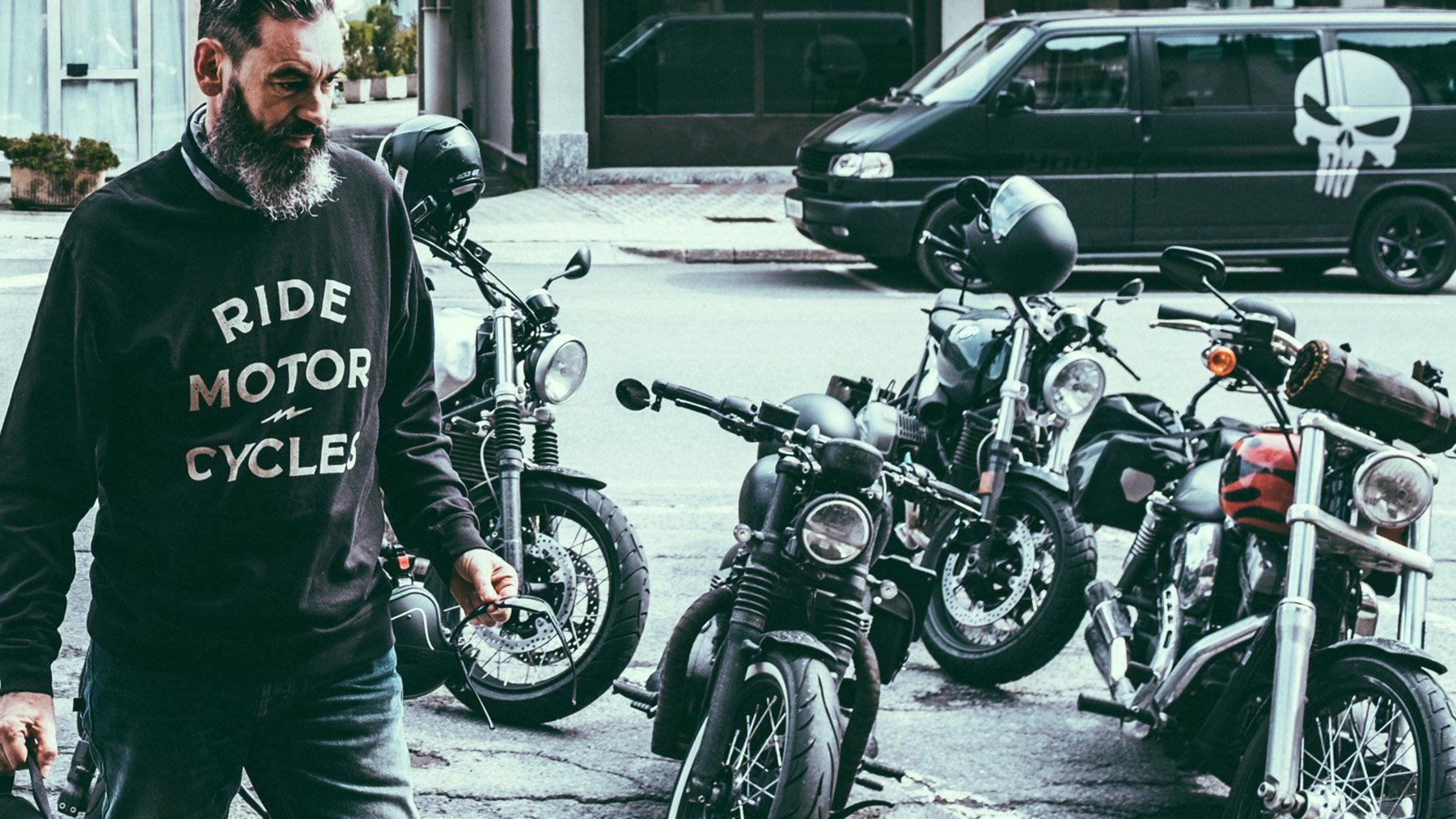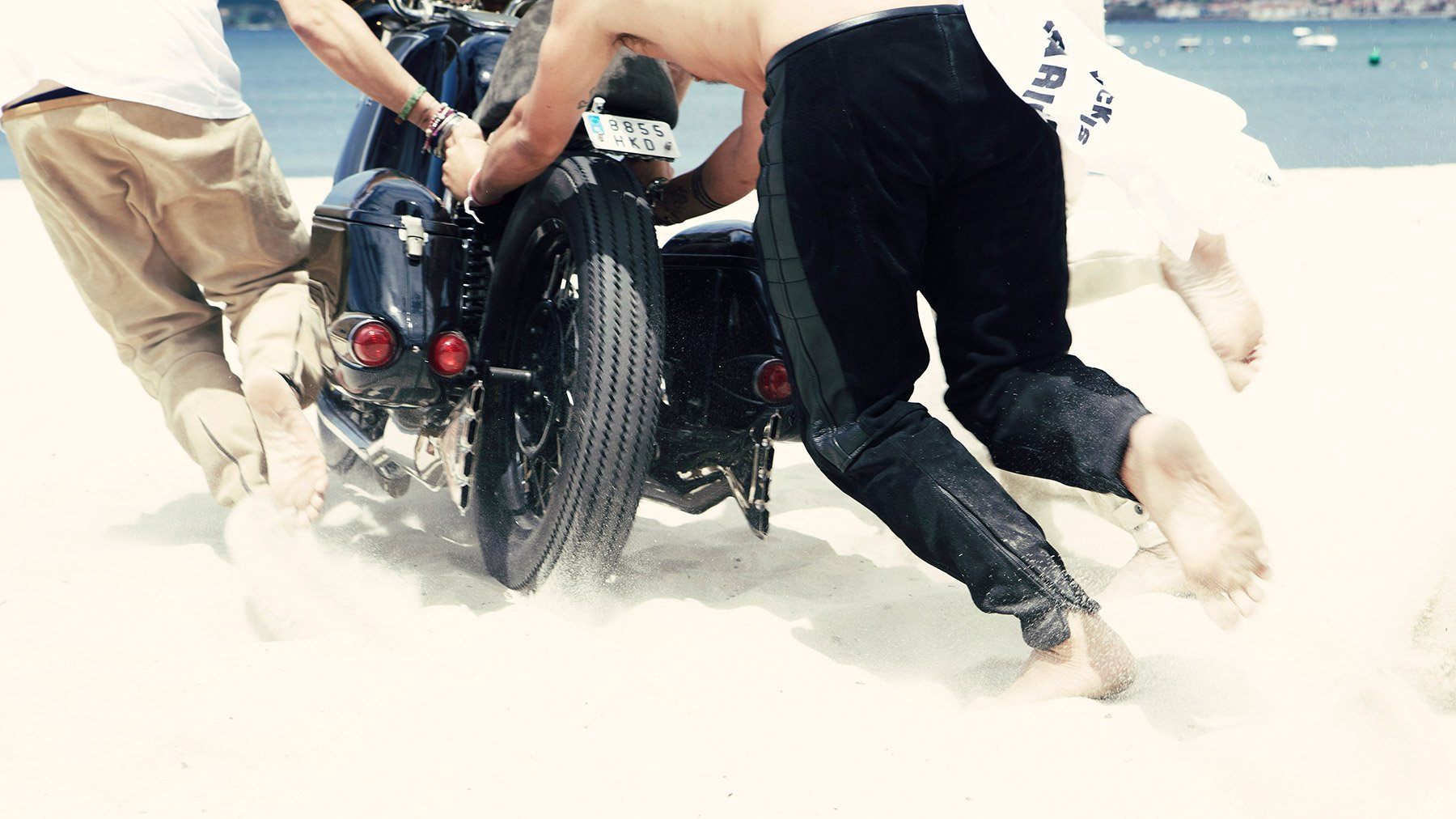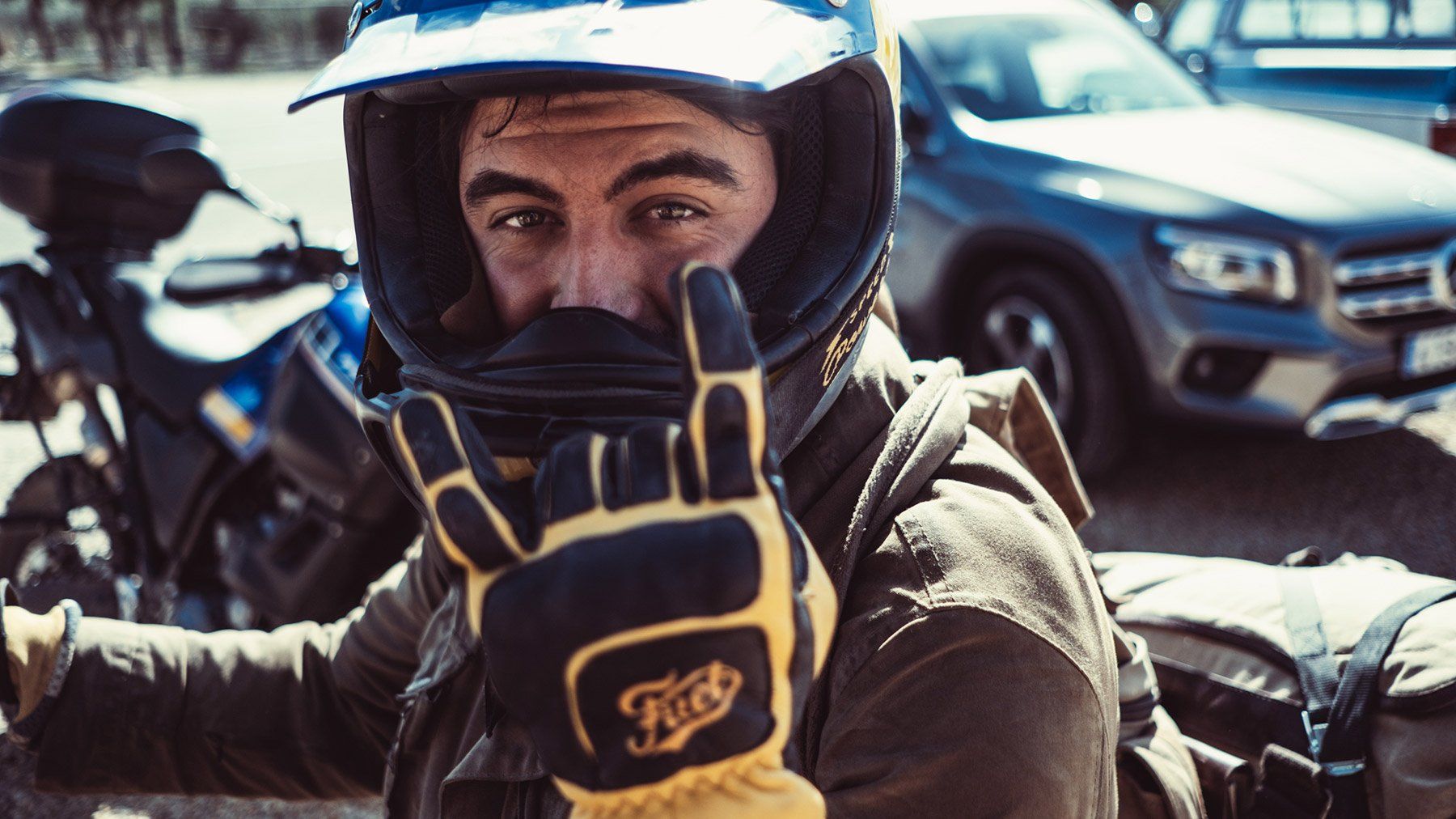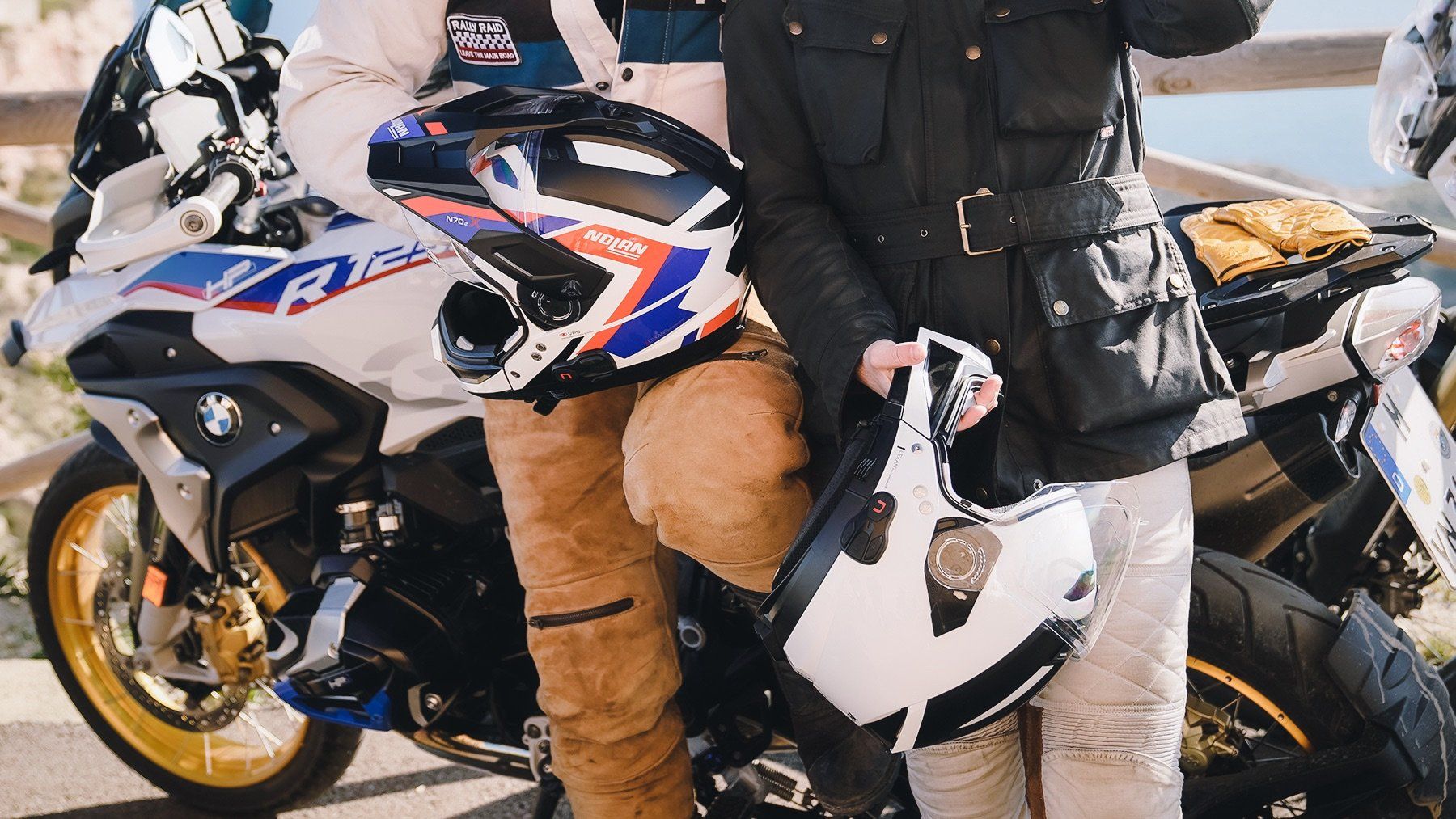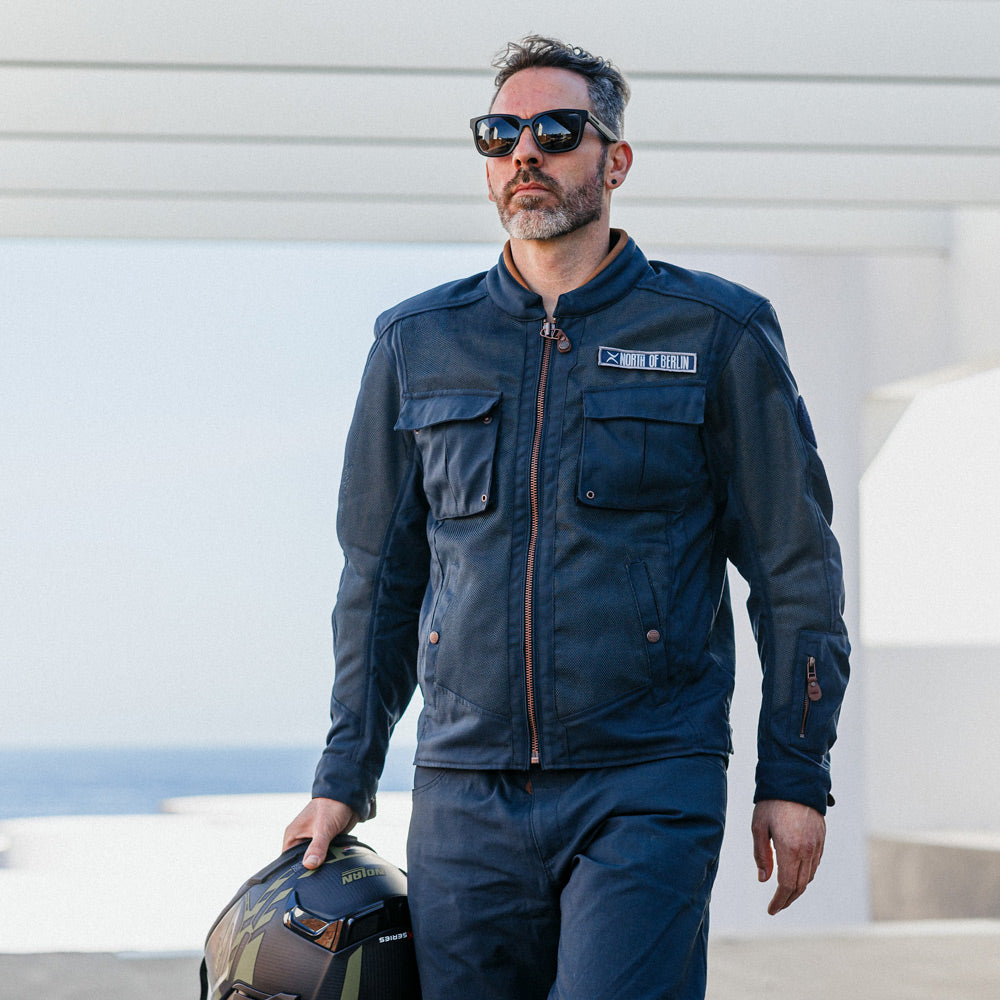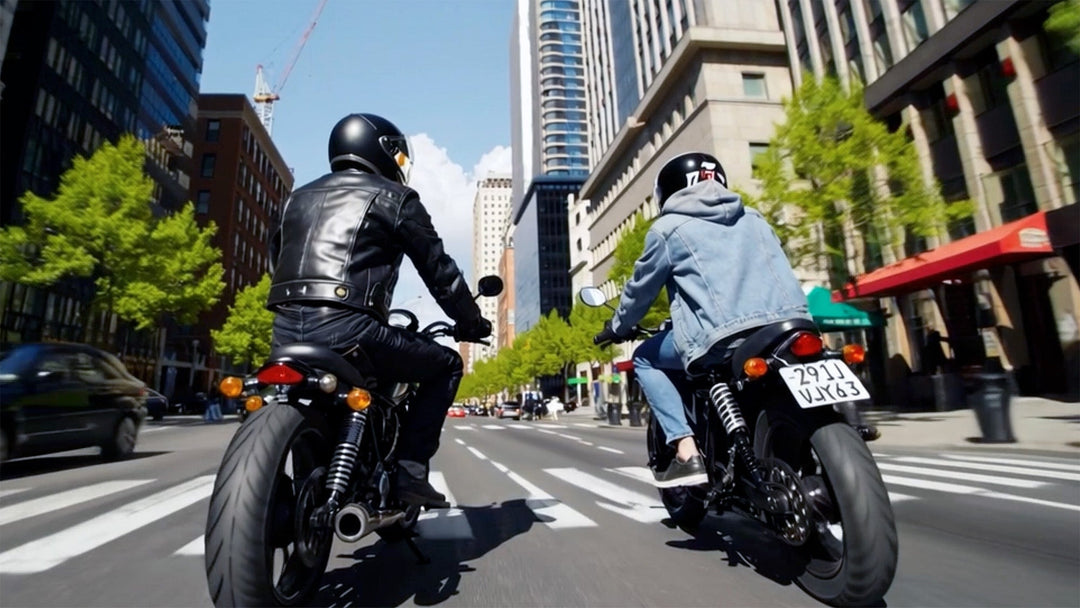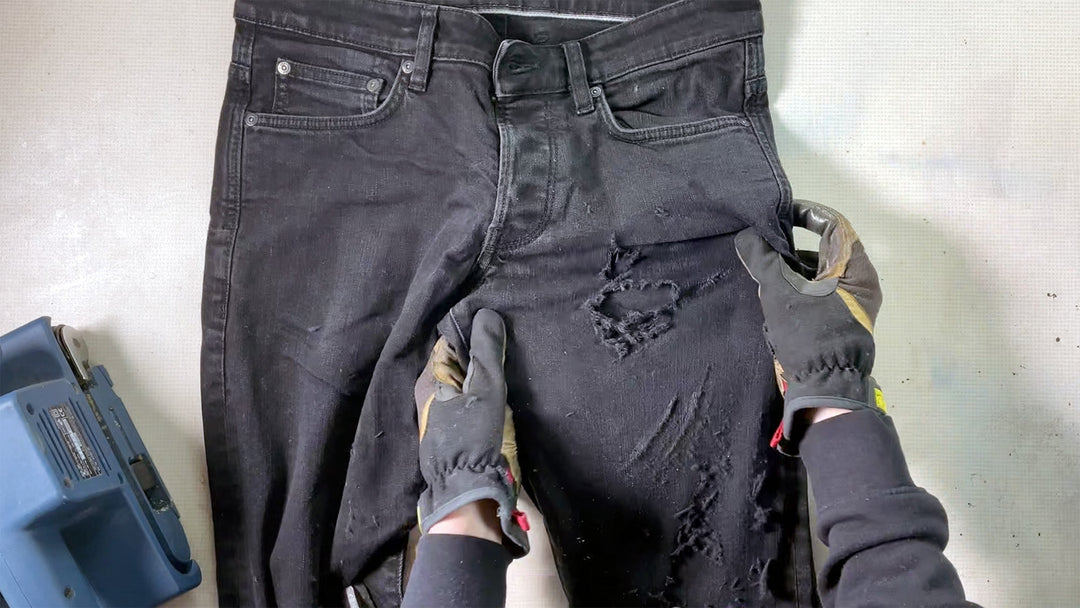A helmet is compulsory for all motorcyclists in Germany. If you drive without one, you risk not only your life, but also a hefty fine. In addition, a motorcycle helmet is only considered a protective helmet if it has been tested according to the standard European rule and bears the ECE mark. You can find the test label either on the chin strap or in the lining. If it says ECE, ECE-R 22 or an E in a circle together with the test number, the helmet complies with the standard and you can be sure that it will protect you from injury in the event of a fall.
The huge selection of safety helmets can be roughly divided into four different categories. Each category has its own advantages and disadvantages and there is the right helmet for every type of rider.
full face helmet:
A full-face helmet protects the head from all sides and is the safest option thanks to its compact design. Anyone who travels a lot, sometimes drives on the Autobahn or just wants to be on the safe side will feel best with this model.
flip-up helmets:
When closed, they differ only slightly from a full-face helmet. But the entire chin piece can be pushed up with just one movement and you have the best all-round view. So if you don't want to take your helmet off all the time, for example at the gas station, flip-up helmets are a good choice.
jet helmets:
The style icon among helmets is particularly suitable for the relaxed riders among us who want to feel the wind in their face. Because the missing visor and chin piece, this type of helmet simply offers less protection in the event of a fall.
Cross and enduro helmet:
The half-open helmet with the pointed chin that tapers forward is suitable for anyone who would like to really step on the gas off-road. Due to the lack of a visor, you should always wear it in combination with cross goggles to protect your eyes from the wind and dust or sand that is thrown up.
Once you have decided on a category, the question arises as to whether you would like to have additional features in addition to protection and a good design. For example, there are models with a built-in sun visor or devices for communication systems. For helmets with a visor, however, we definitely recommend that you buy a helmet with a Pinlock system (to prevent the visor from fogging up).
But no matter which model, which design and which features - none of this is of any use if your helmet doesn't fit you properly. If it is too loose, it will shift in the event of a fall. If it is too tight, pressure points can occur. It is quite possible that you will have to try on different models from different manufacturers until you find the right size. The perfect helmet fits snugly against the cheeks, doesn't pinch or move even when you shake your head. The following also applies: If you press on the back of the helmet, there must be room for an index finger between the forehead and the inner lining.
The service life of motorcycle helmets is usually around 5 to 6 years. It can then happen that the material loses its protective properties, among other things, due to UV radiation and other stresses. Therefore, you should get a new motorcycle helmet after this period of time at the latest. Definitely after a fall.
Important:
Never buy a used helmet! You never know how many times the previous rider dropped his helmet or if he has even had a fall before. You also don't know how often the helmet was exposed to UV radiation. But all these things can mean that the helmet no longer protects you properly, even if it looks like new from the outside.
In principle, many do not want to spend a lot of money on their protective equipment and especially their helmet. However, we would like to strongly recommend that you pay attention to the quality when buying - even if this means a higher price. Because if an accident should occur, high quality also means higher protection.
